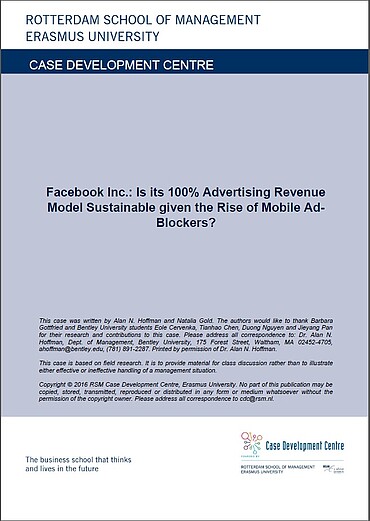description
For two years Facebook has seen a decline of user growth rate in its domestic US market, creating anxiety regarding revenue growth and the growth of the company itself, as Facebook is heavily reliant on advertising. Facebook has to expand its revenue sources and methods both by increasing advertising revenue from regions outside the US and by generating income from sources other than advertising.
Citation Note
Based on field research; 12 pages.
Follow the 'handle' link to access the Case Study on RePub.
For EUR staff members: the Teaching Note is available on request, you can contact us at https://www.rsm.nl/cdc/contact/
For external users: follow the link to purchase the Case Study and the Teaching Note.
Abstract
In 2016 Facebook might be the strongest brand in social media. Growing exponentially in the previous 10 years, Facebook became a unique platform that no one else in the world could easily duplicate. With its strong brand name and vast number of users, Facebook generated over 2.2 billion dollars of revenue annually, 97% of which from advertising. Looking forward to 2017 and beyond, however, Facebook could not ignore the challenge of sustaining its growth. Already for two years, Facebook saw a decline of user growth rate in its domestic US market, creating anxiety regarding revenue growth and the growth of the company itself, as Facebook was heavily, perhaps too heavily, reliant on advertising. Facebook had to expand its revenue sources and methods both by increasing advertising revenue from regions outside the US, for example the Asia-Pacific, and by generating income from sources other than advertising.
